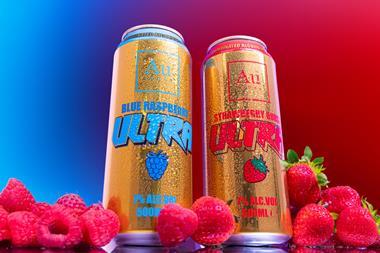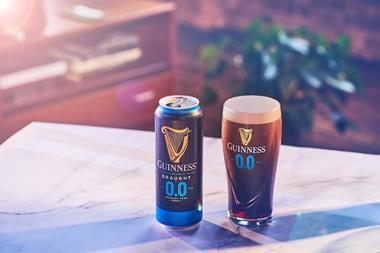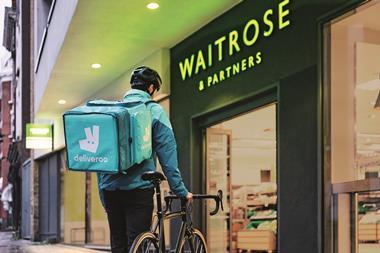Many different shopper behaviours are in evidence when it comes to buying from the cereal category.
It is principally a destination category. Shoppers know they need cereals and visit the aisle to fulfil this need. Judging from lists being crossed off after cereals were put into trolleys, this is very much a shopping list item.
The terminology used to describe the different sectors was interesting - words like usual, normal and traditional were used for branded Corn Flakes and wheat biscuits.
Children’s cereals were clearly identified as a sector while healthier products and muesli were also mentioned.
A high number of skus, many restricted to a single facing, combined with some uncertainly about pack recognition meant shoppers had to work hard to locate their desired pack. A couple walked away empty-handed as they had been unable to see what they wanted - it was on the top shelf and virtually invisible to them.
Some shoppers explored different products, looking at the ingredients, checking for sugar content and nuts. Such behaviour is positive as they are looking at all the different products and actively considering different offers.
Grab and go behaviour was demonstrated in traditional cereals, with shoppers walking down the aisle and reaching out for products.
The need to understand the implications of new pack design was highlighted by one shopper seen to wander up and down the aisle three times, disappear for four minutes and return looking frustrated. With the help of an assistant the product was eventually located. The pack design had changed, making it virtually invisible to this shopper who was searching for a different set of visual cues. She was persistent - another might have given up.
Most shoppers said they had a range of cereals they bought. They also admitted to phases of eating one product, getting bored and going back to another. Childless households said they normally had two to three boxes of cereals at home and those with children had four to five. On average, cereals were bought fortnightly, at 59% of shoppers compared to 31% buying once a week.
Of the shoppers who bought a cereal, 93% had intended to do so. Those who did not saw the display when they entered the store and thought they might as well make a purchase while they were there.
Nearly three-quarters of products purchased were branded. As expected, children influenced the choice. One mother said: “I seem to have two or three opened packets of cereal with one bowlful taken out and then left, all because my child wanted the toy. I fall for it every time.”
Some mothers desired a healthier but fun kids’ range. “Good for them but also with child appeal” said one mother. One product was identified but was lost among chocolate coated products.
Shoppers were divided on out of stocks. On more traditional brands/products, the majority said they would go to another shop.
Bogofs drove a high number to buy a relatively new children’s product. A two for £3 offer worked well for some, but rewarded brand loyalists rather than bringing new shoppers to the range.
It is principally a destination category. Shoppers know they need cereals and visit the aisle to fulfil this need. Judging from lists being crossed off after cereals were put into trolleys, this is very much a shopping list item.
The terminology used to describe the different sectors was interesting - words like usual, normal and traditional were used for branded Corn Flakes and wheat biscuits.
Children’s cereals were clearly identified as a sector while healthier products and muesli were also mentioned.
A high number of skus, many restricted to a single facing, combined with some uncertainly about pack recognition meant shoppers had to work hard to locate their desired pack. A couple walked away empty-handed as they had been unable to see what they wanted - it was on the top shelf and virtually invisible to them.
Some shoppers explored different products, looking at the ingredients, checking for sugar content and nuts. Such behaviour is positive as they are looking at all the different products and actively considering different offers.
Grab and go behaviour was demonstrated in traditional cereals, with shoppers walking down the aisle and reaching out for products.
The need to understand the implications of new pack design was highlighted by one shopper seen to wander up and down the aisle three times, disappear for four minutes and return looking frustrated. With the help of an assistant the product was eventually located. The pack design had changed, making it virtually invisible to this shopper who was searching for a different set of visual cues. She was persistent - another might have given up.
Most shoppers said they had a range of cereals they bought. They also admitted to phases of eating one product, getting bored and going back to another. Childless households said they normally had two to three boxes of cereals at home and those with children had four to five. On average, cereals were bought fortnightly, at 59% of shoppers compared to 31% buying once a week.
Of the shoppers who bought a cereal, 93% had intended to do so. Those who did not saw the display when they entered the store and thought they might as well make a purchase while they were there.
Nearly three-quarters of products purchased were branded. As expected, children influenced the choice. One mother said: “I seem to have two or three opened packets of cereal with one bowlful taken out and then left, all because my child wanted the toy. I fall for it every time.”
Some mothers desired a healthier but fun kids’ range. “Good for them but also with child appeal” said one mother. One product was identified but was lost among chocolate coated products.
Shoppers were divided on out of stocks. On more traditional brands/products, the majority said they would go to another shop.
Bogofs drove a high number to buy a relatively new children’s product. A two for £3 offer worked well for some, but rewarded brand loyalists rather than bringing new shoppers to the range.
















No comments yet